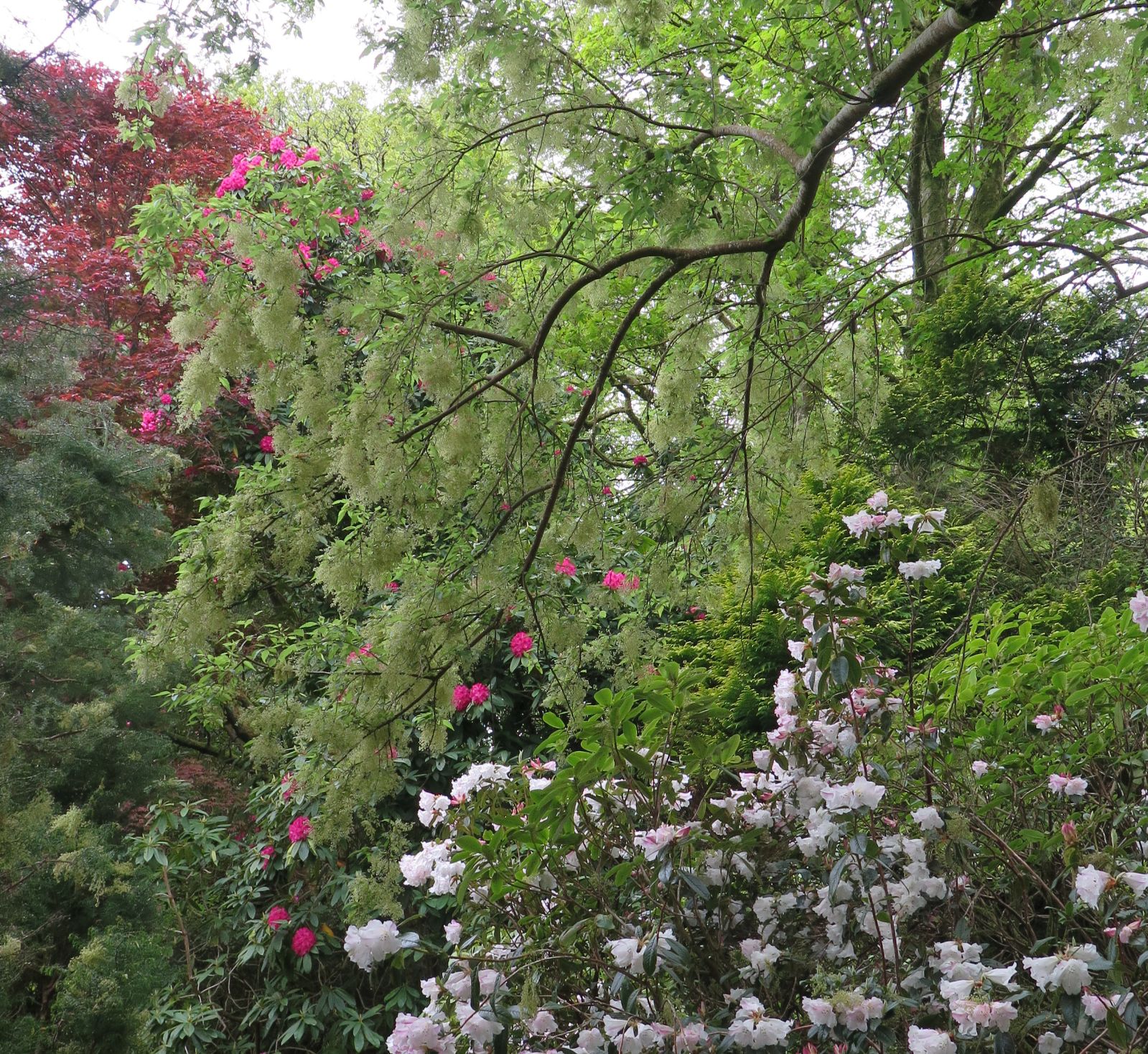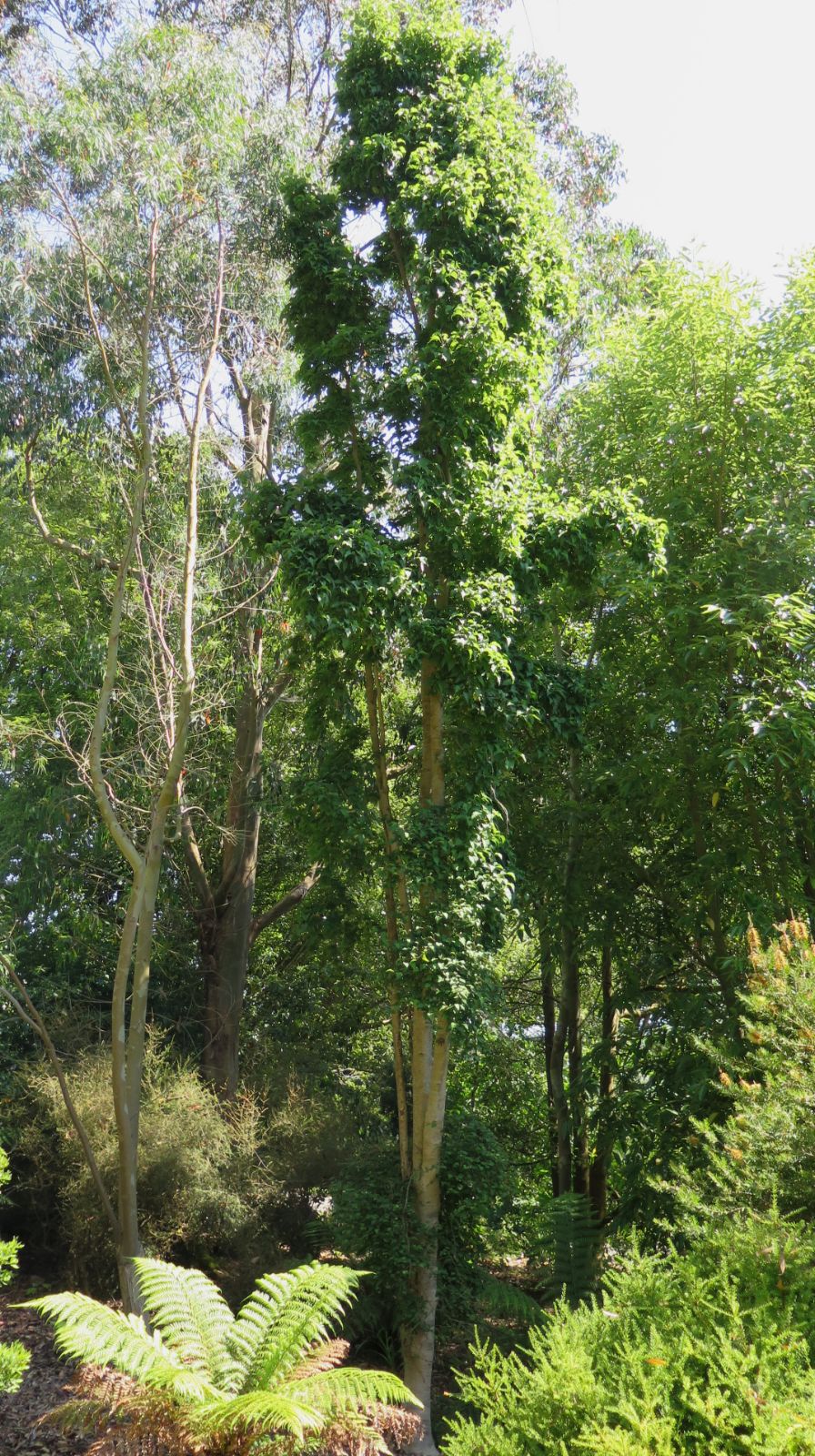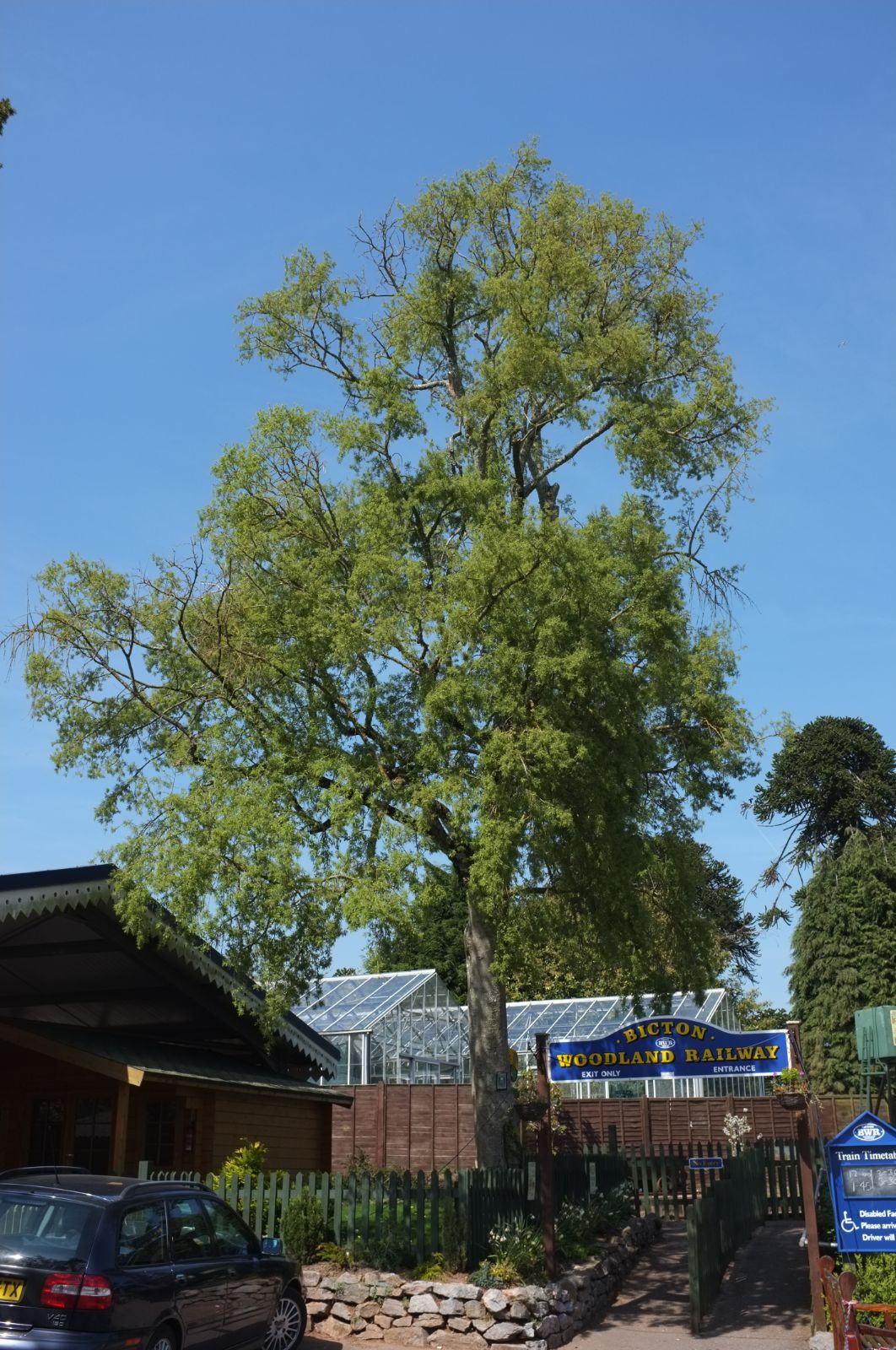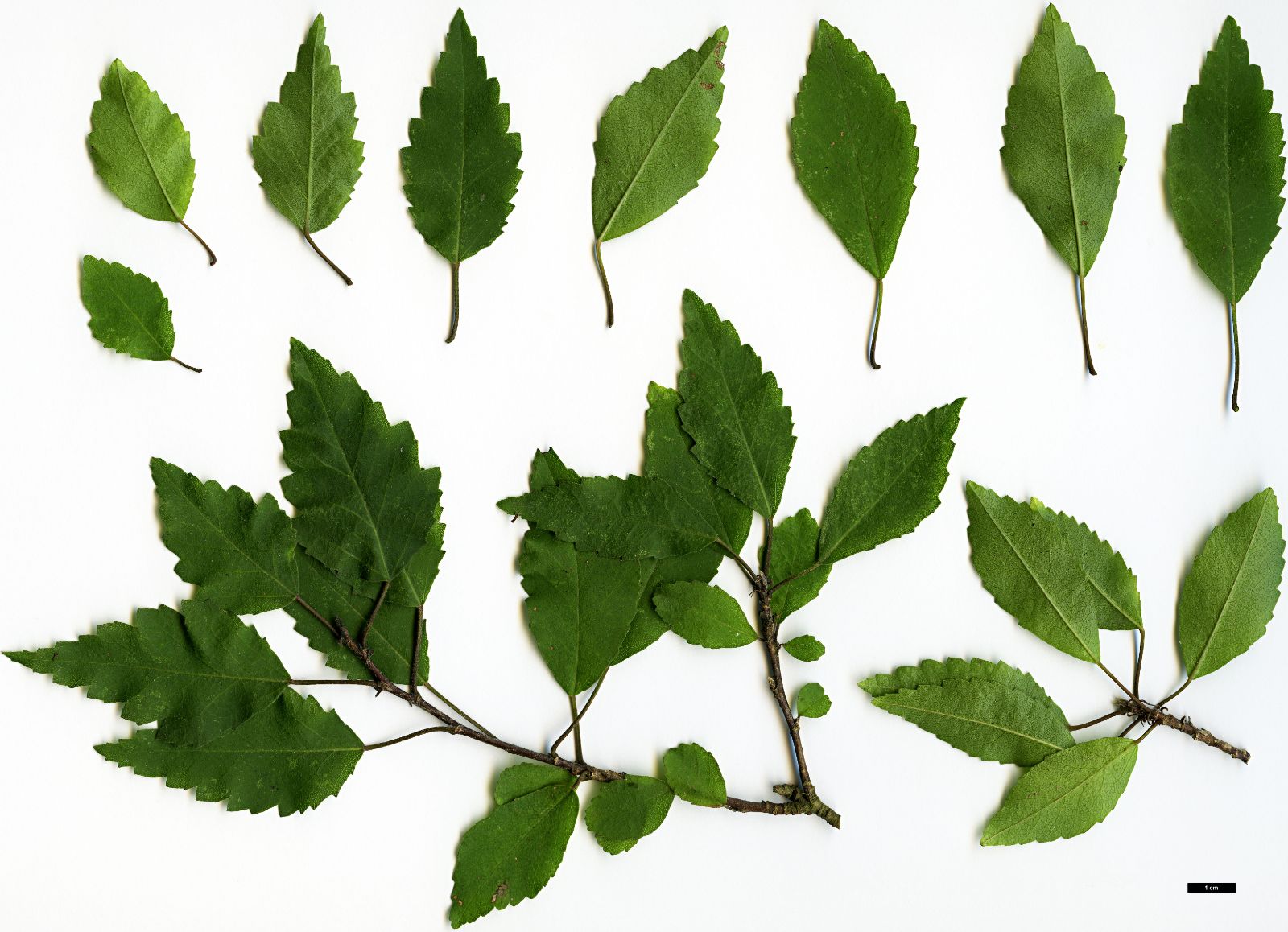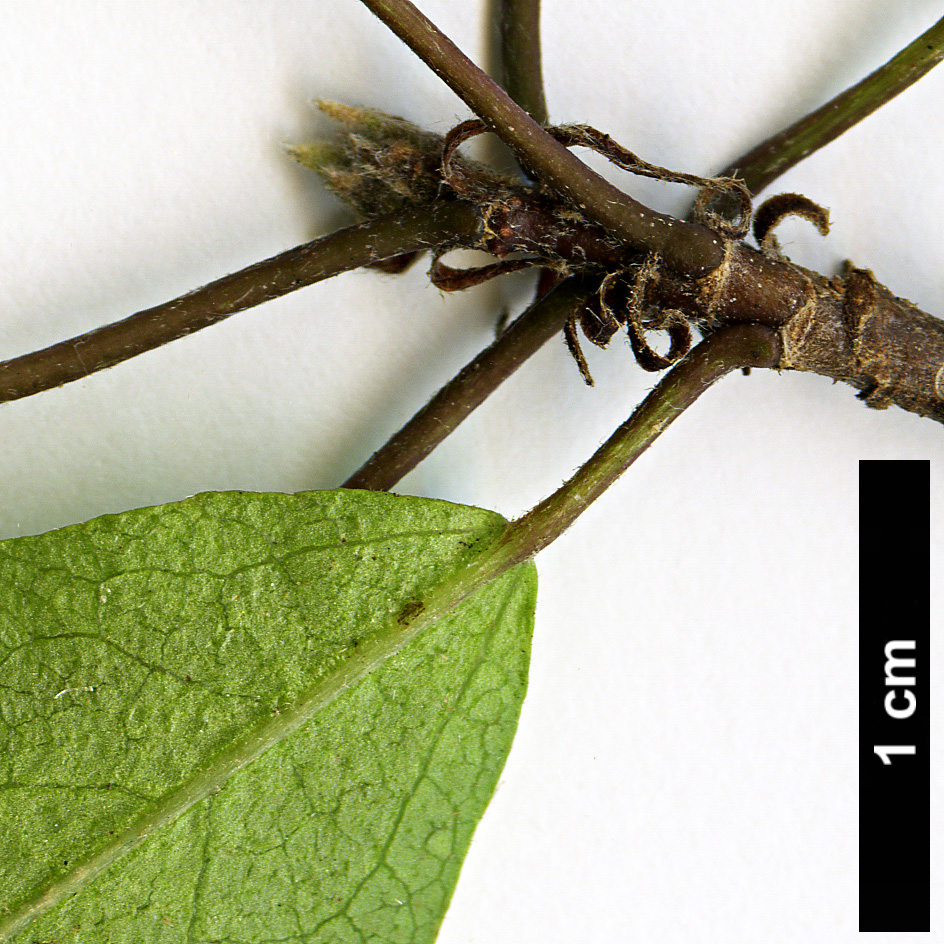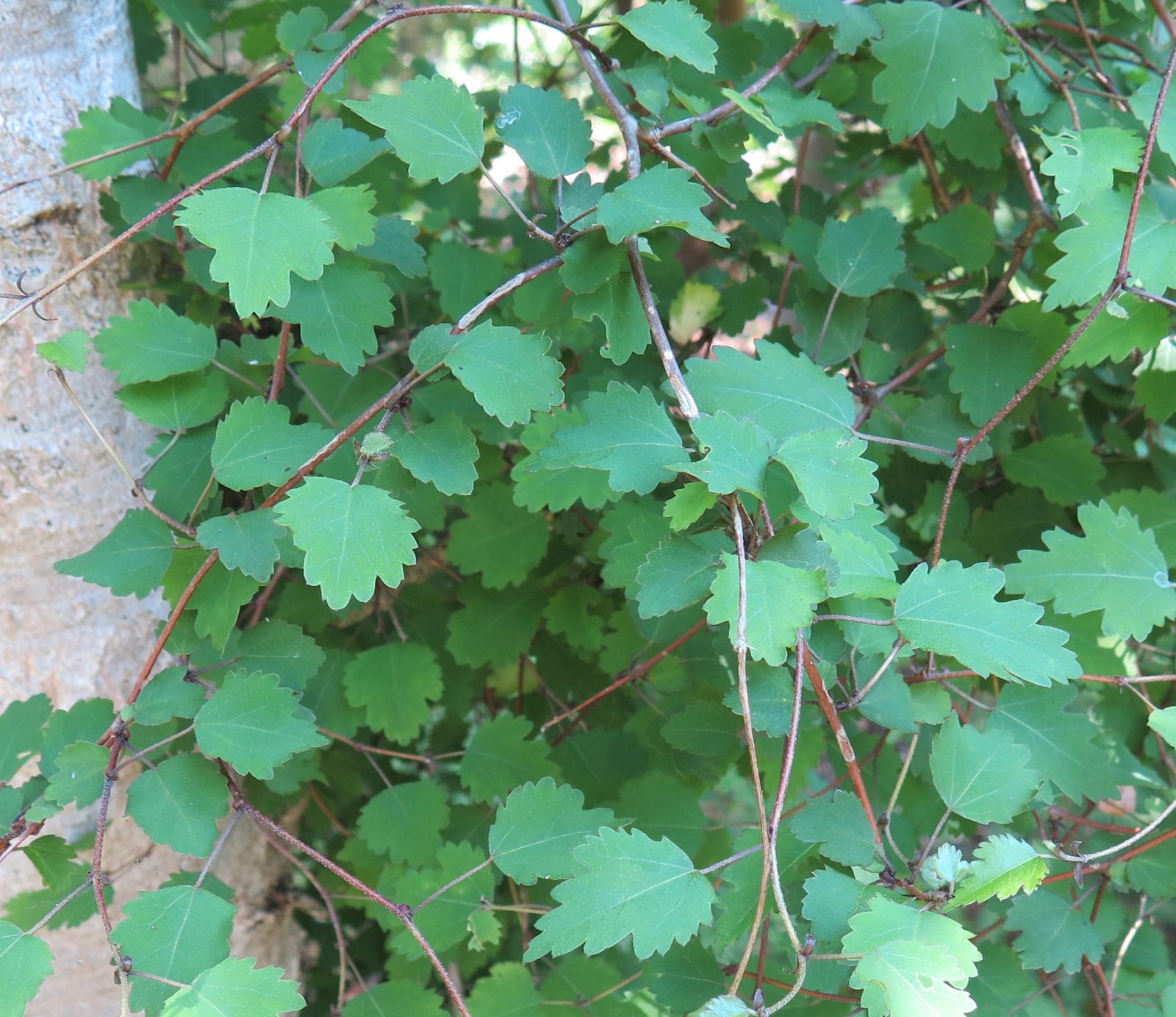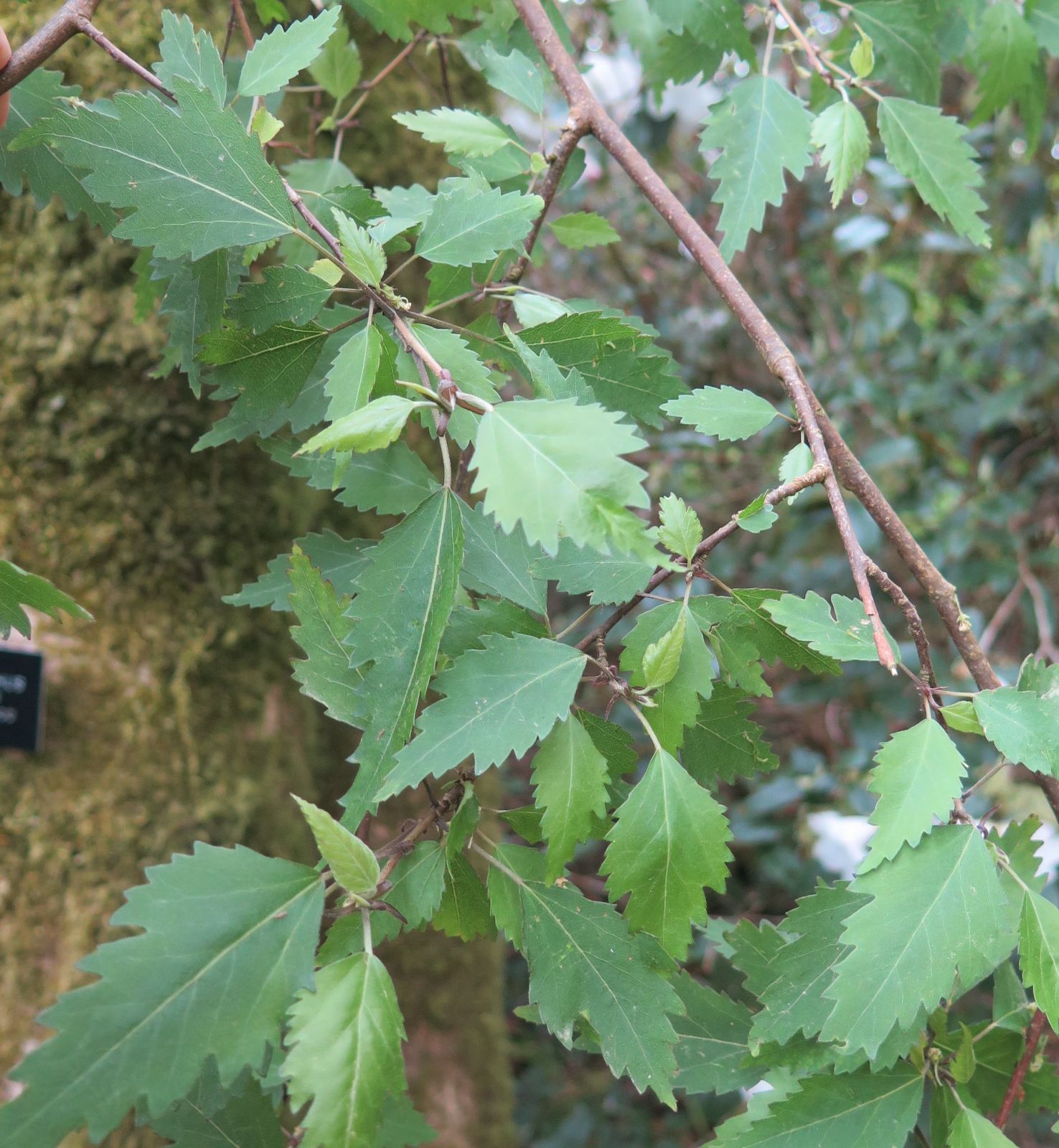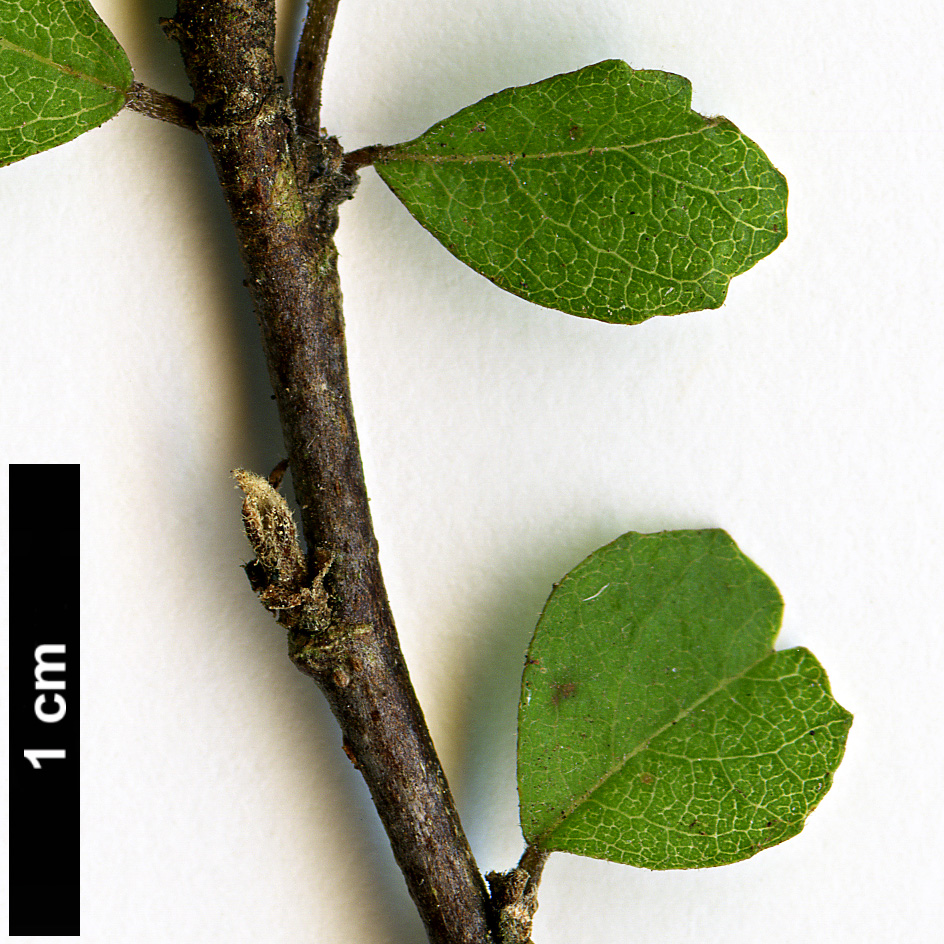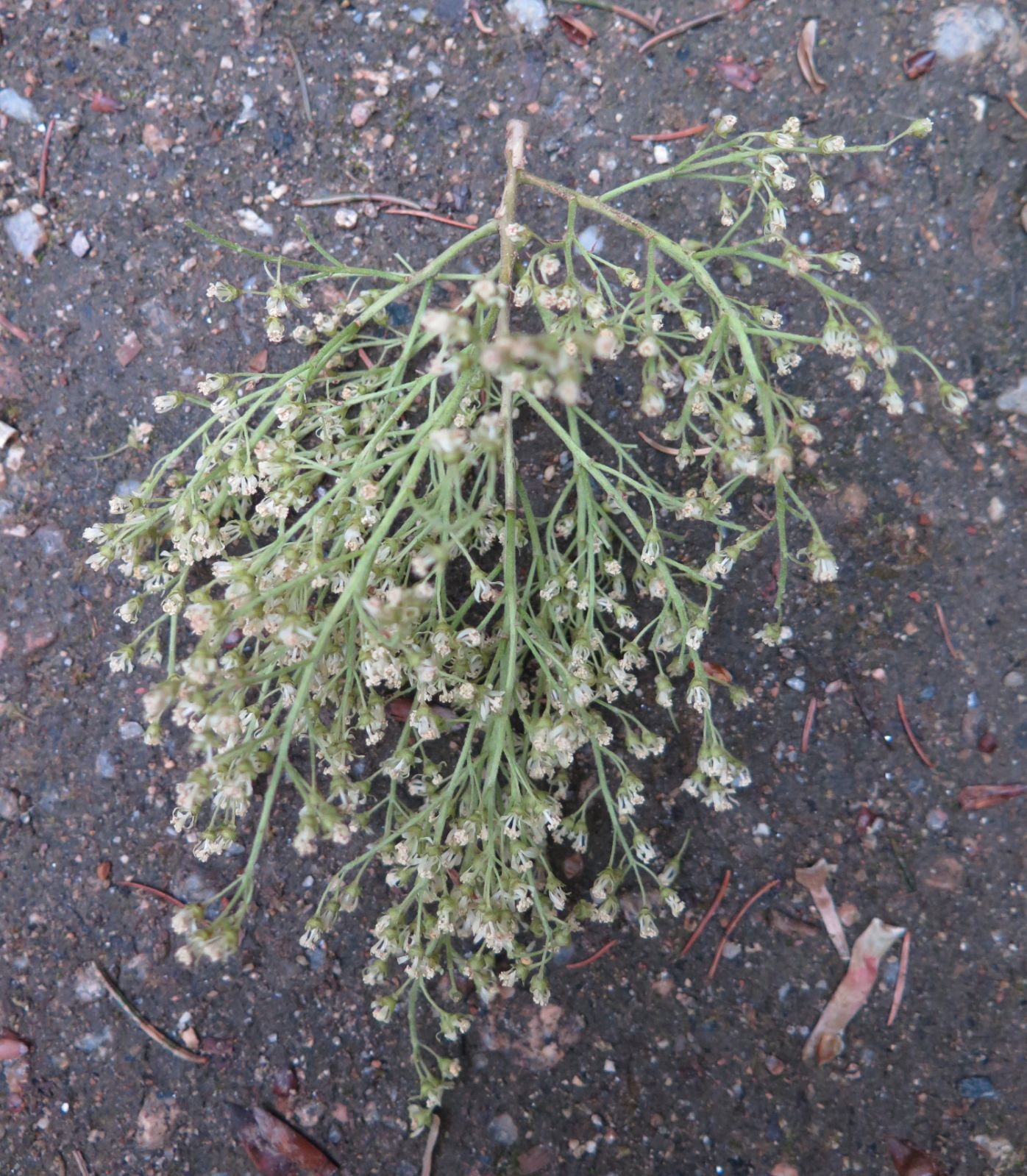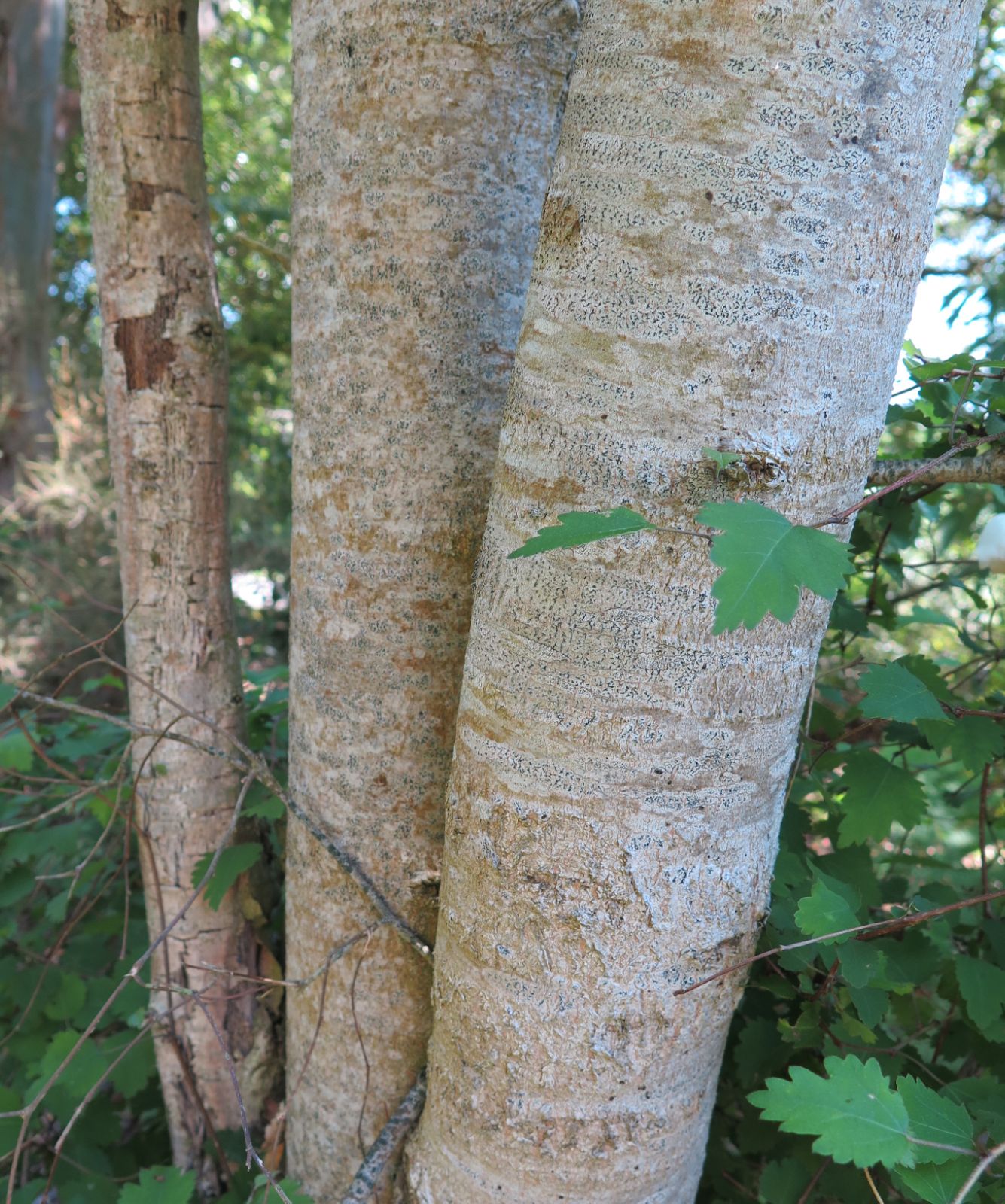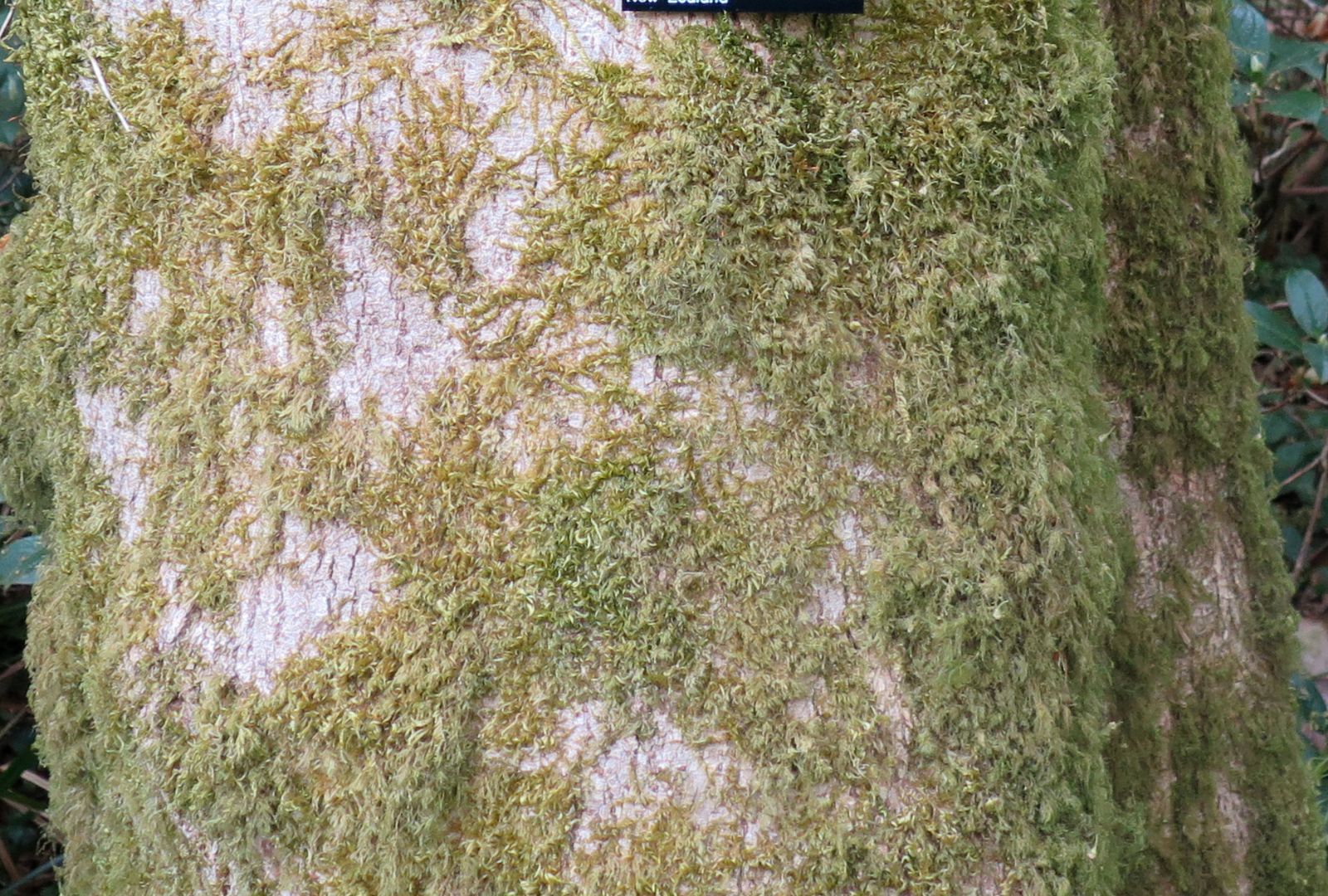Plagianthus regius
Sponsor
Kindly sponsored by a member of the International Dendrology Society.
Credits
Julian Sutton (2022)
Recommended citation
Sutton, J. (2022), 'Plagianthus regius' from the website Trees and Shrubs Online (treesandshrubsonline.
Genus
Common Names
- Mānatu
- Lowland Ribbonwood
- Houi
Synonyms
- Plagianthus betulinus A.Cunn.
- Philippodendrum regium Poit.
Small or medium tree to 15(–20) m, deciduous to semi-evergreen. Heteroblastic, with juvenile, intermediate and adult growth forms, adults often with shoots reverting to the juvenile form. Non-flowering juvenile plant a bush to ~2 m height, with dense, slender, more or less interlacing zigzag branchlets. Indumentum stellate. Leaves rather distant, with ~5 mm petioles; lamina broadly ovate to ovate-lanceolate, 0.5–1.5(–2) × 0.3–1(–1.5) cm, margins crenate-serrate, sometimes deeply, irregularly lobed. Plant maturing gradually via a semi-adult flowering stage with larger leaves. Adult plant a tree; leaves with petioles to 3 cm; lamina ovate to ovate-lanceolate, or broad-ovate, (1–)3–7.5 × 0.5–5 cm; base cuneate or truncate, apex acuminate, margins coarsely and irregularly crenate-serrate. Subfloral leaves smaller. Flowers 3–4 mm diameter, mostly unisexual, occasionally hermaphrodite, many in paniculate cymes to 25 cm; pedicels very slender,~5 mm long; calyx campanulate, ~2 mm, with 5 narrowly triangular teeth; petals white, spathulate-oblong, clawed. Male flowers with exserted staminal column; anthers about 12 or more, red, subsessile on column, style aborted, included in column. Female flowers with ripe carpels 3–5 mm long, ovoid, pointed. Seed solitary. Flowering September–November (New Zealand). (Allan 1961; New Zealand Plant Conservation Network 2022; Wilcox 2002).
Distribution New Zealand North, South and Stewart Islands
Habitat Coastal to lower montane forests, often in lowland alluvial forest.
USDA Hardiness Zone 8-10
RHS Hardiness Rating H3
Conservation status Least concern (LC)
Not in the first rank of ornamental trees, Plagianthus regius nevertheless deserves garden attention in our area for its fine, narrow growth form in youth, its froth of tiny, ambiguously fragrant flowers in late spring, and its sheer curiosity value.
This is widely regarded as the tallest deciduous tree indigenous to New Zealand. A mature height of 15 m is not uncommon, although a 20 m specimen has been recorded in the Auckland area (Wilcox 2002). A fast growing tree (New Zealand Plant Conservation Network 2022), much of this height is gained early in life, young trees having a narrow, columnar crown form and slender trunk. Even in the relatively dry climate of eastern Ireland, a specimen planted in 1990 at Glasnevin National Botanic Garden had achieved 10 m × only 29 cm by 2012 (The Tree Register 2022). In maturity the crown becomes much broader. Although essentially a deciduous tree, persistent ambiguity in descriptions of the plant in New Zealand and British cultivation suggest that like many deciduous New Zealand trees and shrubs, leaf fall is tardy and gradual under some conditions. Its heteroblastic life form adds to the interest, and to identification difficulties. The distinction between a divaricating, non-flowering, small leaved juvenile form and a larger leaved flowering tree is less clear cut than in many other species. Intermediate-leaved flowering forms are quite normal, and juvenile-form shoots may occur on mature trees (Allan 1961). Plants intermediate between P. regius and P. divaricatus have been described from several places where their ranges overlap, and Allan (1961) was in no doubt that at least some of these were hybrids. We have no reason to believe that such plants are in cultivation.
Flowers are individually small, but the rather loose, airy inflorescences are big enough to be conspicuous in the canopy in late spring, usually to high up to be appreciated at close quarters. The overall effect of the female flowers with their whitish petals, the even less conspicuous male flowers among them, and the yellow-green pedicels and peduncles, is of an indeterminately cream-green froth. Nectar is produced, and P. regius is considered a useful bee forage resource by apiarists (Newstrom-Lloyd 2013). When there is no seed set in gardens, entire inflorescences quickly abscise, carpeting the ground (pers. obs.).
This is a widespread species at lower and middle altitudes across New Zealand, and one might expect variation in hardiness (Bean 1976). However, French trials of material collected at higher altitudes in South Island concluded that it would probably not prove hardy where winter temperatures fall below –10°C (Harris, Cadic & Decourtye 1998). This correlates with the trend for older British specimens to be near western coasts (The Tree Register 2022). Wetter sites are usual in the wild, and while moist, well drained soil in at least partial sun is probably the ideal (Far Reaches Farm 2022), it can be grown on any reasonably fertile soil (Edwards & Marshall 2019).
The scientific name of the Lowland Ribbonwood has been subject to change, an unhappy result of historical issues and the rules of nomenclature, rather than any uncertainty about the delineation of the species, or its relationships (Earp 2020). For much of the 19th and 20th centuries it was known as Plagianthus betulinus (Cunningham 1840). However, this is predated by Poiteau’s 1837 name Phillipodendrum regium, based on plants propagated by the French nurseryman Louis Noisette from a specimen in England, wrongly thought to have come from Nepalese seed. A new combination based on this name, Plagianthus regius, is now widely accepted (New Zealand Plant Conservation Network 2021; Royal Botanic Gardens, Kew 2022) although P. betulinum is still sometimes seen. However, it seems that Poiteau’s name was itself invalid; he himself described unflowered material of the same plants as Betula bella two years previously, rendering it and the new combination illegitimate, and threatening to force a further new combination (Plagianthus bellus) to become the legitimate name. To avoid this unpalatable outcome, a proposal to conserve the name Phillipodendrum regium against Betula bella, and hence validate Plagianthus regius, is under consideration (Earp 2020). There is no such doubt around the vernacular name Mānatu, the tree being well known to the Maori; its bark was used in textile making and for tying (Landcare Research 2022).
Outside New Zealand, this tree is rarely grown except in Britain, whose cultural links to New Zealand probably explain its presence. Bean (1976) gives 1870 as the date of introduction, although the circumstances of its naming (see above) imply a date before 1837. A few old specimens are scattered across the milder, rainier west. One of a pair dating from about 1900 at Portmeirion, NW Wales, measured 17 m × 139 cm in 2016, while a tree at Lukesland, Devon, probably planted in the 1930s measured 16 m × 157 cm in 2015 (The Tree Register 2022). Smaller, mostly younger specimens are rather more widespread. Misidentification seems quite common. During research for this account, more than one tree labelled P. regius / betulinus in British collections (one in a major botanic garden) proved on examination to be a Hoheria of one sort or another (pers. obs. 2021).
This is an extremely uncommon tree even in more maritime parts of mainland Europe. No examples are recorded in the well stocked arboreta and botanic gardens of Belgium, for example (Plantcol 2022). Almost unknown in North America, Plagianthus regius would suit mild, moist coastal gardens in the Pacific Northwest. A specimen in a private Kingston, WA, garden grew quickly and in character, and material has been distributed by Far Reaches Farm, WA, who describe it enthusiastically as ‘kind of a mind-blowing tree’ (Far Reaches Farm 2022).
subsp. chathamicus (Cockayne) de Lange
Synonyms
Plagianthus chathamicus Cockayne
Plagianthus betulinus var. chathamicus (Cockayne) Cockayne
Distribution
- New Zealand – Chatham Islands
RHS Hardiness Rating: H2
USDA Hardiness Zone: 9-10
Differs from subsp. regius in lacking the finely branched, divaricating juvenile form, although leaves of young plants are smaller than those of adults (de Lange 2008; New Zealand Plant Conservation Network 2022). It replaces subsp. regius in the Chatham Islands, but is now also known from the main islands through cultivation (New Zealand Plant Conservation Network 2022). Since Chatham Island populations are unlikely to prove as hardy as at least some provenances of subsp. regius, it is worth ensuring that one acquires the latter for planting in colder areas.


